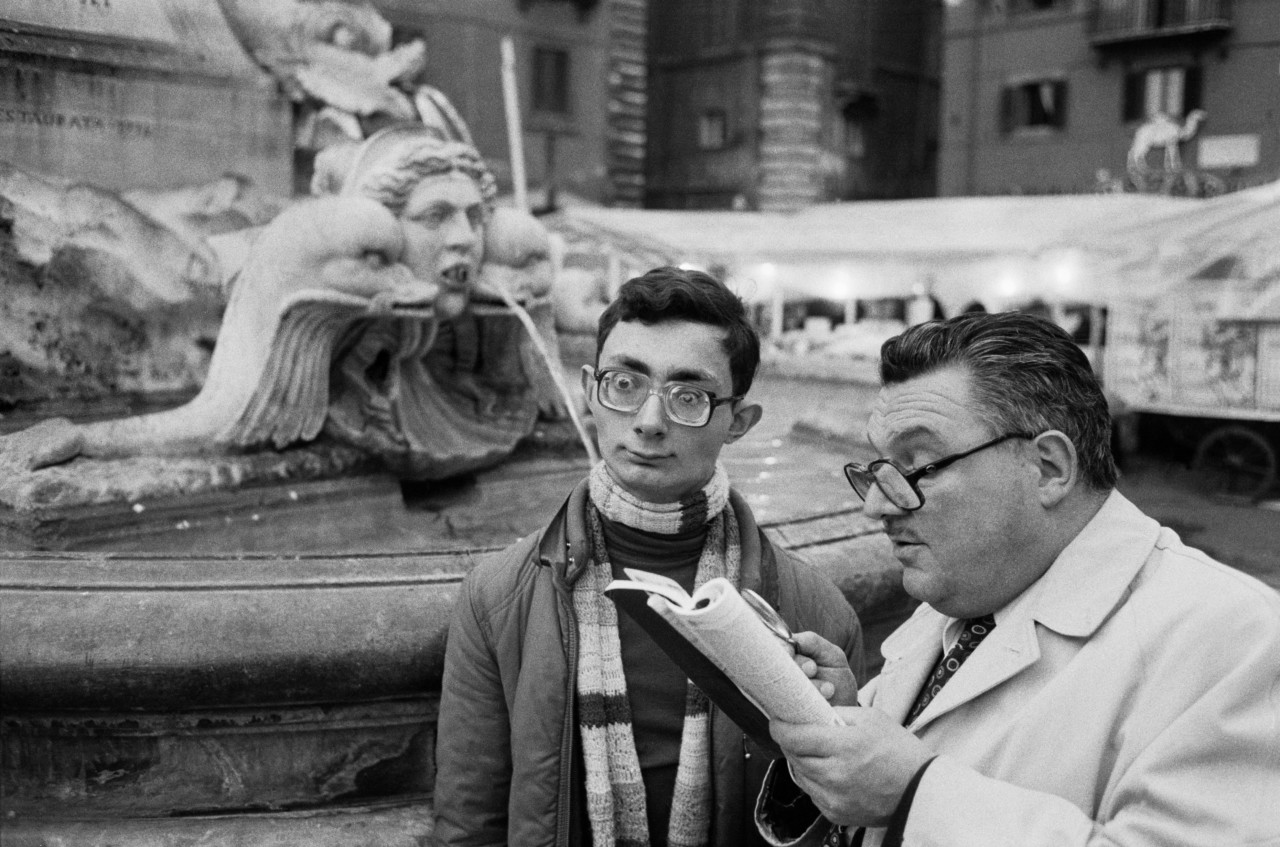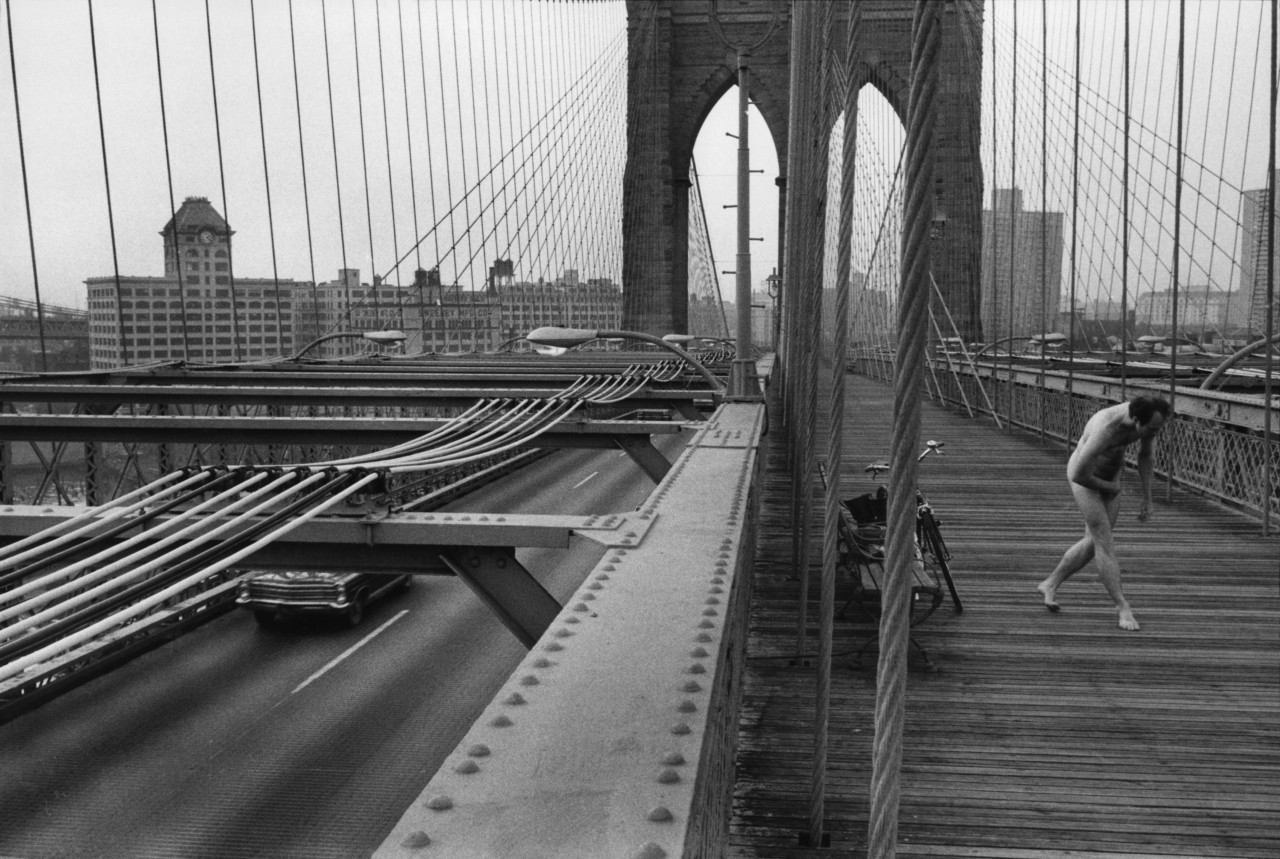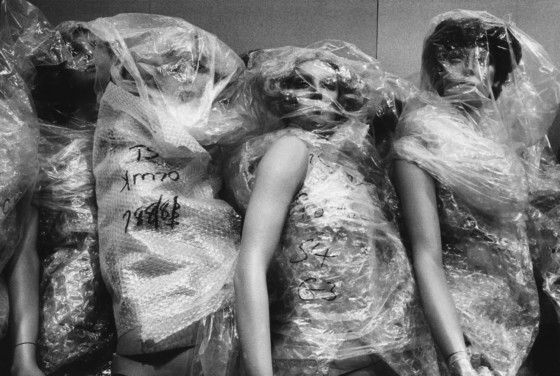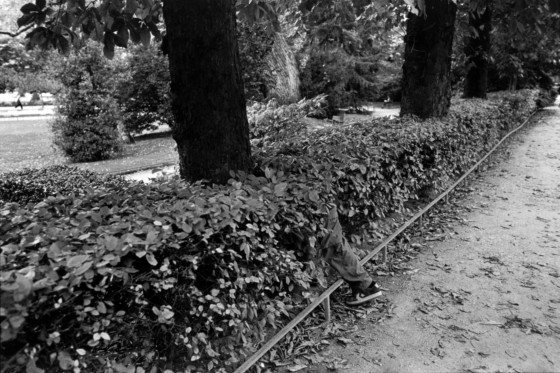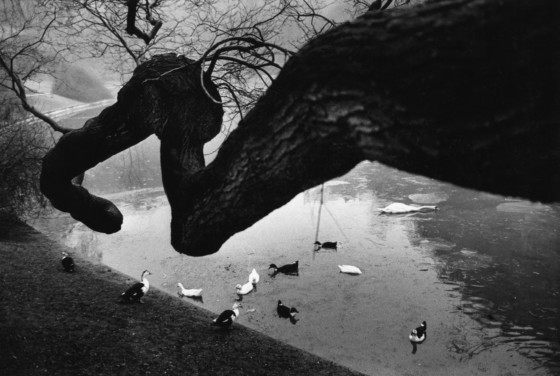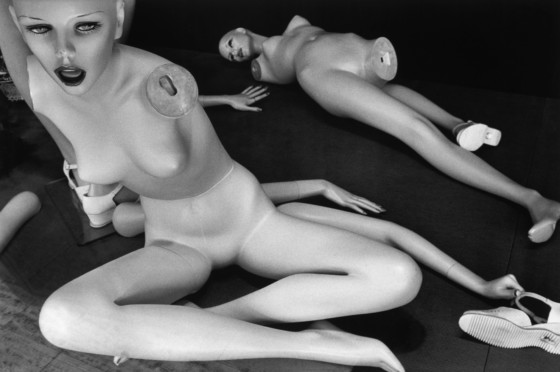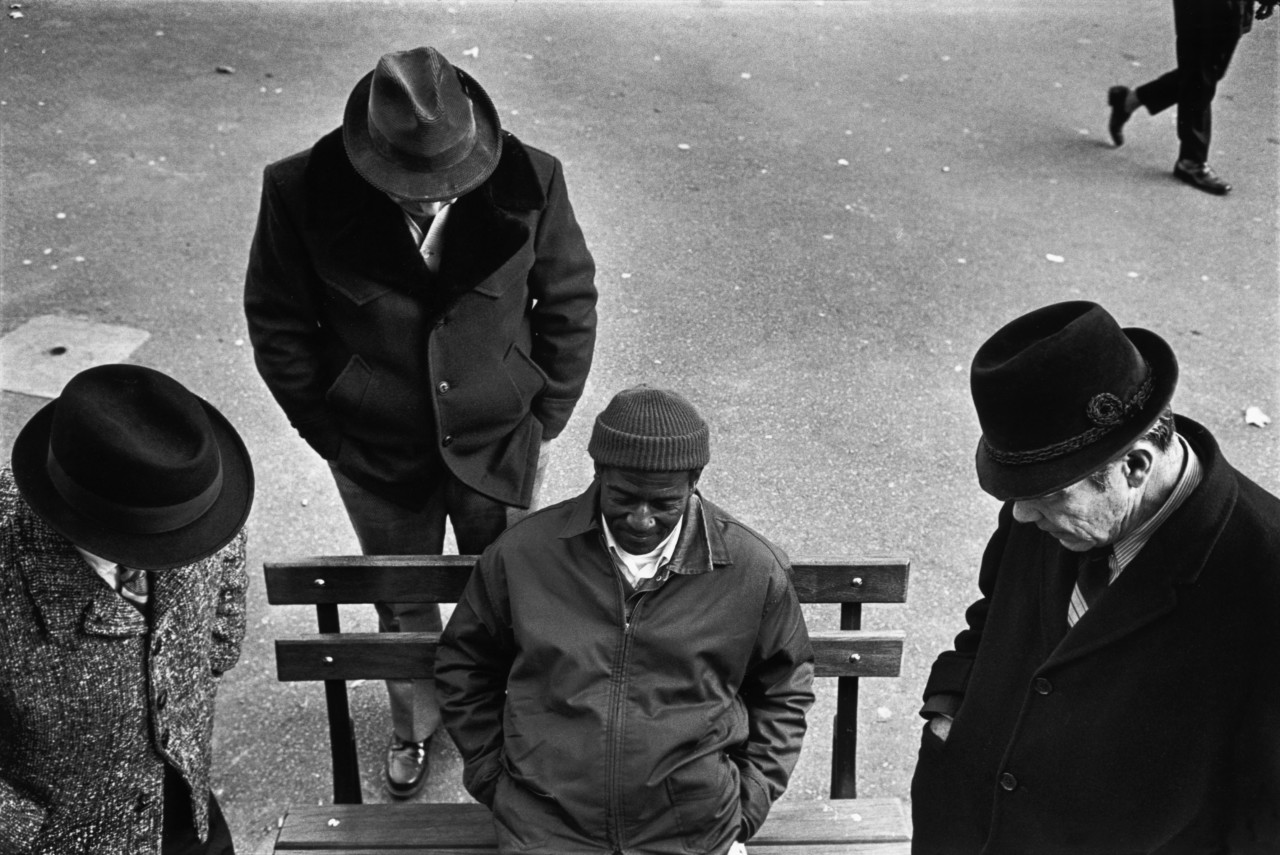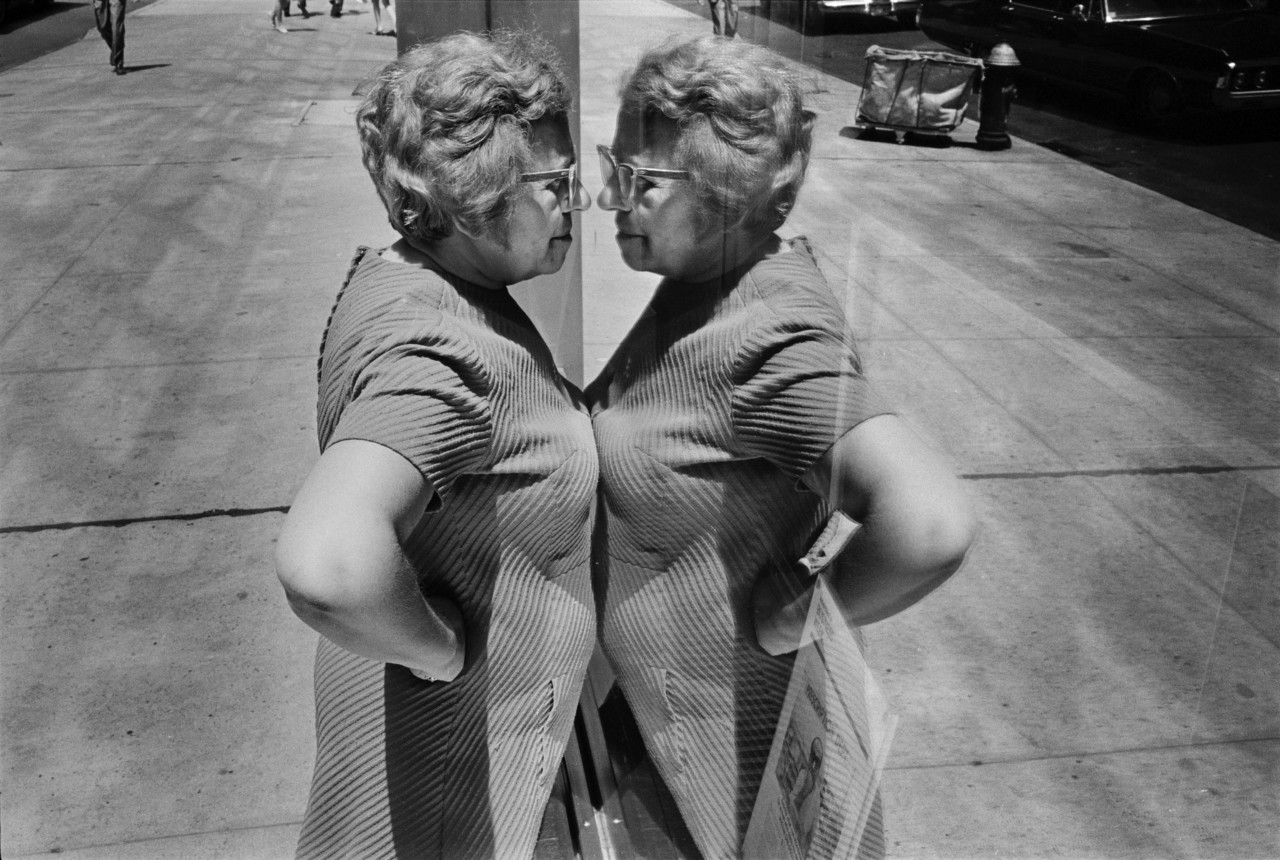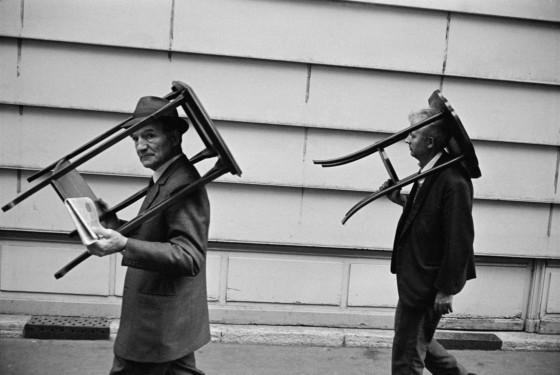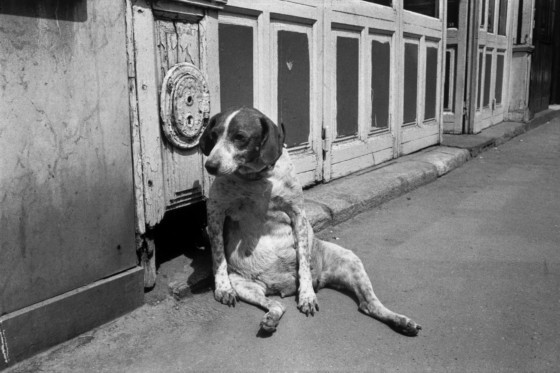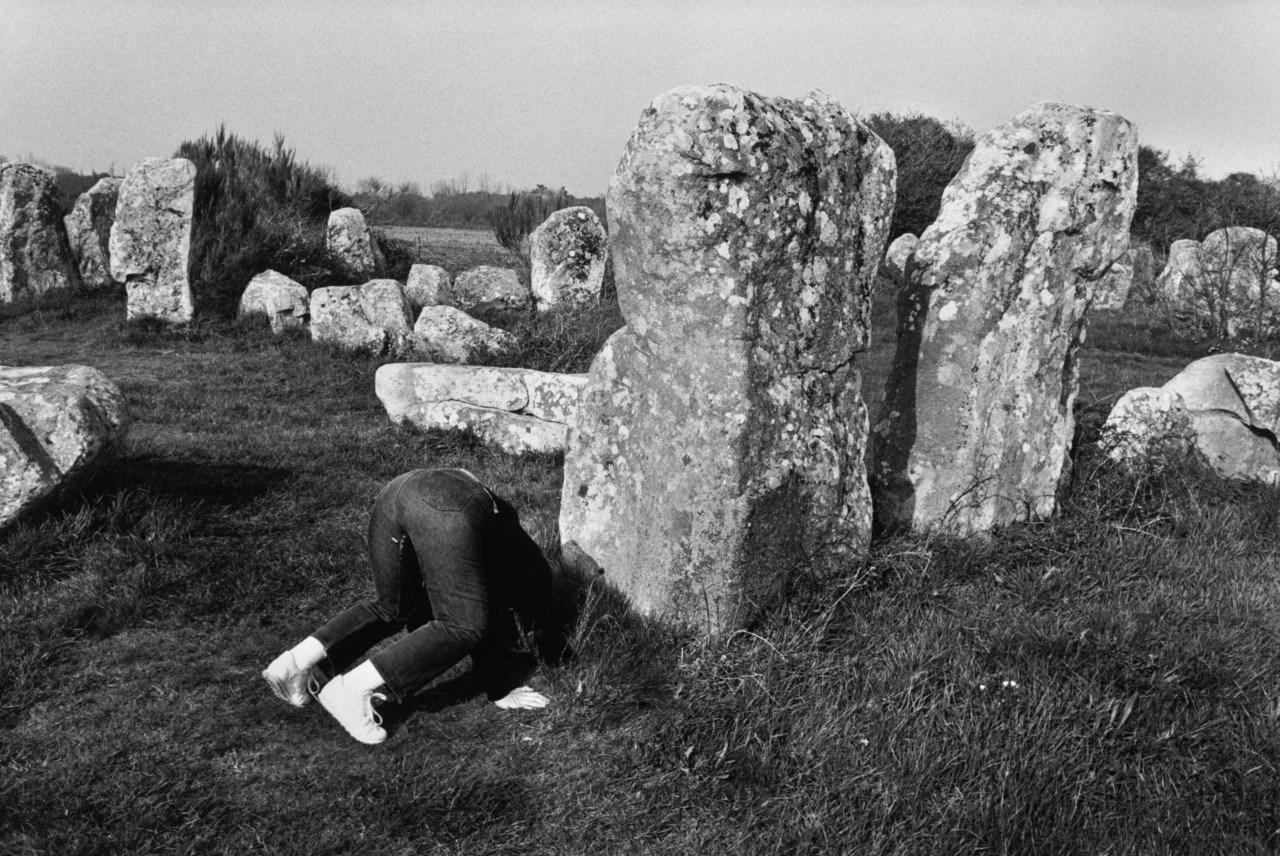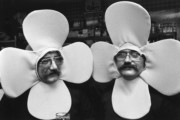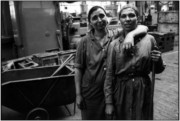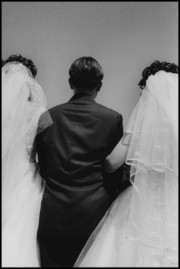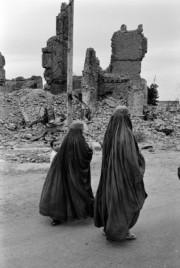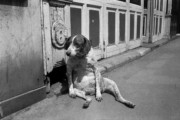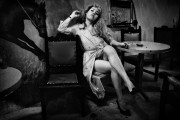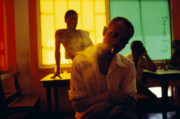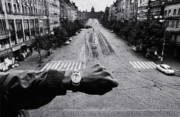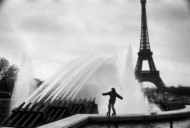The Strangeness of Earthlings
In Richard Kalvar’s retrospective book, ambiguity and multiple meaning reign
A leg is suspended in a bush. Is there a body attached? A naked man with receding hair contorts his arms and legs on Brooklyn Bridge. A bike rests nearby. Is this performance art? A sign of a disintegrating mental state? A man who just enjoys being naked in public? All answers are correct and yet none are correct. As with all photography, these images are a snapshot of reality but they are not reality itself.
Richard Kalvar, the author of these ambiguous scenes, has spent more than 50 years stalking streets, bars, parks and parties, searching for the “magical” moment when composition, framing and subject align and an entire universe is created in a single frame. “When you take a photograph you’re extracting it from something bigger that is moving and is in 3D”, says Kalvar. “You’re giving this little isolated moment meaning and the meaning is not always very clear – it’s almost never very clear.”
Earthlings is a retrospective of this unposed work, which many would categorise as “street photography”. Kalvar is hesitant to label it as such. “These kind of pictures are often taken on the street but if I walk into a bar or go to a wedding and take a few pictures that’s street photography too,” he says. “So ‘street’ is used but it’s not very accurate.” Unposed is the key word. A more interesting distinction, he argues, would be to ask if he had implied or explicit permission to take the pictures, or not. “The other thing about them is that they exist on their own; they’re not part of telling a larger story,” he adds.
Kalvar first realised photography’s potential for multiple meaning when he discovered the work of Robert Frank and Henri Cartier Bresson during his early twenties. “I had an idea about photography when I was growing up, that it was very literal,” he says. “There were captions telling you what the world was like and how you were supposed to look at it. I always felt a kind of resentment at that, that I was being told how to think.” Frank’s seminal book The Americans, said otherwise. “The pictures weren’t telling you what to think, they were just reacting.”
These revelations gave Kalvar an overwhelming sense of freedom. “I realised I didn’t have to follow the rules or show the world the way you’re supposed to show it,” he says. “It was liberating to know it was possible to do that…I had no idea!” He first explored this new way of seeing during a year-long trip to Europe. He almost didn’t bring his camera—a gift from fashion photographer Jérôme Ducrot whom he’d been assisting—but as he wandered around “looking at things”, his interest and voice began to emerge. “I found something; a way of photographing. And I think that I’m essentially doing the same thing today that I did 50 years ago. I’m looking for the same things,” he says.
His purpose may be the same, but over time Kalvar has honed his skill—part visceral instinct part learned technique—at quickly finding a balanced composition. Kalvar, who briefly flirted with theatre, is creating mini-dramas, where the world is the stage and the actors don’t know they’re actors. His subjects—animals, people, inanimate objects—are all contained in the rectangular frame of his choosing. “If you want to give a feeling and impression, things have to work together within the four walls,” he says. “The frame as a limit is very important.”
The photographs in Earthlings have no linear theme but they are all united in their singular, timeless intensity. Kalvar ignores convention and ceremony. He strips away our masks of grandeur as we eat, grimace, shout and caw. His humans are animalistic, while his animals are quietly dignified. They are earthlings. As Garry Winogrand once said: “There’s nothing more mysterious than a fact clearly described.”
Kalvar is one of the teachers on Magnum’s first online education course, The Art of Street Photography. Through exclusive lessons with industry experts and seven Magnum photographers, the course explores the history of the genre, and offers exclusive insights on techniques and approaches involved in working on the street. You can learn more about the course, here.


